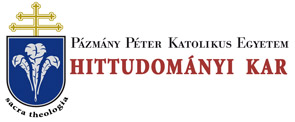Folia Theologica 16. (2005)
Pál Bolberitz: The Beginnings of Hungarian Philosphy (The Reception of Nicholas of Cusa in the work of "De homine" by Peter Monedulatus Csokas Laskoi)
THE BEGINNINGS OF HUNGARIAN PHILOSOPHY 13 stance" was translated by him as "animal)17, after all in his work, titled as "Hungarian logics" (in Hungarian: "Magyar logikátska") (1654) he presented in Hungarian the doctrine of Descartes and following closely the Huguenot Ramus' and the puritan Amesius' thoughts, the famed tutor of logics of the renaissance age. After then it took a lot of time so that the Hungarian philosophical works could be published, since in the university in Nagyszombat, founded by Peter Pázmány (1635), philosophical knowledge was handled also in Latin. The situation partially was the same in the Protestant schools of Sárospatak, Papa, Debrecen, Marosvasarhely, Fogaras and others. The Book of "De homine" by Peter Monedulatus Csókás Laskoi Peter Csókás Laskoi (? -1587)18 the excellent representative of the Calvinist Hungarian theology in the 16th century, who studied in Wittenberg, and a few works with theological topic had also here been published (mainly with the characteristic features of religious controversies and apologetics). The longest work of him in the subject of philosophy ("De homine")19("Two Books about Man, This 17 Cp. J. APÁCZAI CSERE, Magyar enciklopédia (Hungarian Encyclopedia), Utrecht, 1653, which was written in Hungarian by the author (the author discusses in Latin about „The Learning of Wisdom”). Apaczai in this work of him treated metaphysics, logics and theology as sciences equal to other, like physics, geometry and astrology. 18 Laskoi (Laskai? Furtherly - because of the uncertainty of the name - we are going to use the following versions of his name: Laskoi, or name of Laskai) Csókás (Monedulatus) Peter (lat. Petrus Lascovius Monedulatus) is from the Hungarian village of Lasko, but the events of life predominantly happened in the premises of the Transylvanian Principality, being relatively independent, and not in the territory occupied by the Turkish. He departured from the Transylvanian area to abroad, where he returned in 1587, and died as the director of the Presbyterian College in Fogaras. 19 The full title of Laskoi’s masterpiece: „De homine, magno illo in rerum natura miraculo et partibus eius essentialibus libri V. Autore Petro Monedulato Lascovio Ungaro, Wittenbergae. Per haeredes Johannis Cratonis, 1585. The form of the book is a small octavo on 439 pages. The book is introduced by a recommendation letter, written by the author to the Lord Mayor of Wittenberg, Seelfisch, and here are enlisted the Hungarian academical students, attending the University of Wittenberg between 1522-1585. It is fol-
